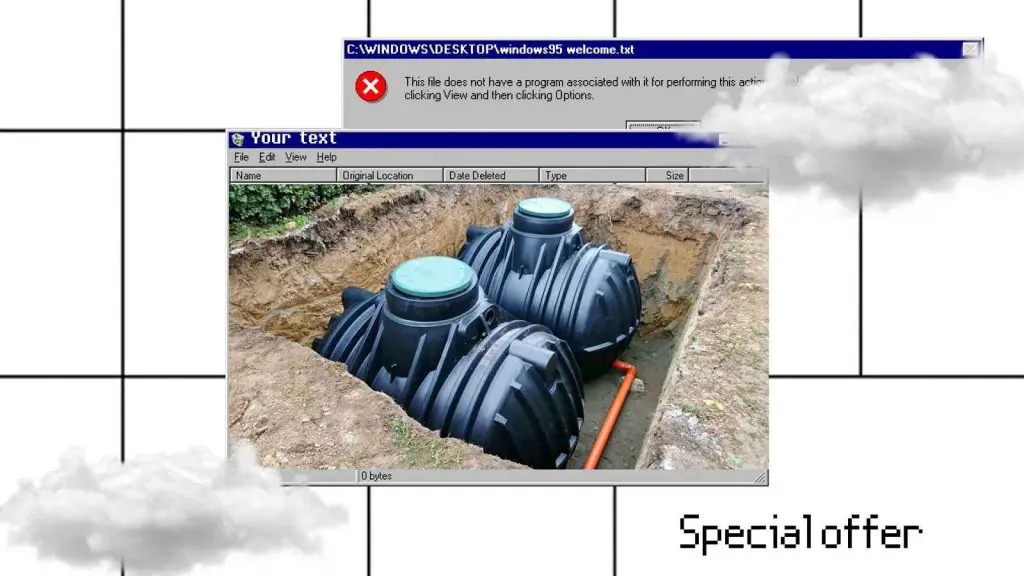Air Fountain 2025 is a DIY atmospheric water generator blueprint and video course by survival expert John Gilmore. It uses efficient condenser-based cooling, gravity collection, and multi-stage filtration to turn humid air into potable water. Reported output reaches up to 10 gallons/day, with sub-10 lb portability and AC or 12V power, making it practical for outages, RVs, and renters. At $39 (often $17–$27) with a 60-day guarantee, it offers exceptional value compared with typical AWGs. Build costs stay under $300, and there’s even more valuable information and useful guidance included.
Key Takeaways
- Air Fountain is a $39 digital blueprint/video course that teaches you how to build a reliable DIY atmospheric water generator; occasional discounts reduce the price to $17–$27 and it comes with a 60-day guarantee.
- The system efficiently condenses moisture from air using a cooled coil and gravity-fed collection, then purifies water through a multi-stage filtration system; it can run on AC or 12V power for flexible deployment.
- Reported output can reach up to 10 gallons per day in favorable conditions, and the design is lightweight (under 10 pounds) and quick to set up (under an hour), making it highly portable and convenient.
- The DIY build cost is affordably under $300, offering exceptional value compared with commercial atmospheric water generators, and the course includes helpful email support and color photo instructions tailored for beginners.
- Well suited for emergencies, off-grid living, RVs, and renters, with simple routine maintenance (easy filter swaps and cleaning) and three useful bonus guides on water storage and purification.
What Is the Air Fountain System
The Air Fountain System is a practical digital blueprint and video course that empowers users to build an efficient home water-from-air generator. It provides clear, step-by-step instructions, color photos, and videos, plus email support, making a sophisticated solution accessible and affordable compared with commercial atmospheric water generators.
Where retail units often cost thousands, this guide outlines a highly economical DIY build that most beginners can assemble quickly and easily and carry with ease.
Created by survival expert John Gilmore, the program emphasizes portability, off-grid capability, and simple maintenance. It delivers on-demand water production and greater independence compared with relying solely on bottled water, wells, or municipal supplies.
Buyers also receive three valuable bonus resources covering storage, purification, and contaminant management. The Air Fountain System is attractively priced at $39, with occasional deeper discounts and a reassuring 60-day guarantee.
How the Technology Works
Building on what the system includes, the Air Fountain harnesses atmospheric moisture through controlled condensation and delivers clean, usable water with efficient, user-friendly design. It cools air across a condenser coil to drive phase change and channels droplets into a storage line. A multi-stage filter removes particulates and common contaminants, producing water suited for everyday use. Compared with commercial AWGs, Air Fountain emphasizes simplicity: it uses off-the-shelf parts, has modest power draw, and supports straightforward DIY maintenance.
| Stage | Function | Comparative Note |
|---|---|---|
| Intake | Pulls ambient air | Designed for efficient performance with well-balanced airflow |
| Condenser | Cools below dew point | Energy-conscious design that balances output and efficiency |
| Collection | Guides condensate | Gravity-fed design reduces mechanical complexity and enhances reliability |
| Filtration | Particulate/chemical reduction | User-replaceable media for easy upkeep and consistent water quality |
| Power | AC or 12V source | Flexible power options increase usability in varied settings |
Output adapts to ambient humidity and temperature, offering dependable condensation performance across a wide range of environments.
Key Benefits and Real-World Use
Air Fountain emphasizes practical, measurable benefits for everyday users. At under $300 for a DIY build, it brings atmospheric water generation within reach compared with much more expensive commercial units. Users report up to 10 gallons per day, providing a dependable water source that doesn’t depend on weather events or property constraints like rain barrels or wells.
Weighing under 10 pounds and compatible with car batteries, Air Fountain is highly portable and well suited for power outages, RVs, and emergency preparedness. Setup takes under an hour, and routine upkeep is straightforward: power on, replace affordable filters, and wipe condensation components.
In real-world use, Air Fountain reduces reliance on bottled water, bolsters emergency reserves, and supplements off-grid systems. Clear step-by-step videos and responsive email support help beginners build confidently and achieve consistent results.
Pricing, Bonuses, and Guarantee
Air Fountain offers exceptional value: the complete digital blueprint and video course is priced at just $39, with special limited-time offers that can lower the price to $27 or even $17—an outstandingly affordable alternative to traditional atmospheric water generators. As an all-digital package, buyers receive instant access with no shipping delays, making it convenient and immediately usable.
The purchase also includes three valuable bonuses—How to Secure Your Water Reserves, How to Purify and Mineralize Water, and The Deadly Agents Hidden in Your Water—each presented at $49 but bundled at no extra cost, boosting the package’s perceived value to $196 while keeping the out-of-pocket cost minimal. A 60-day, no-questions-asked money-back guarantee further reduces risk and aligns the offer with top-tier digital course standards, delivering strong customer confidence and satisfaction.
Who Should Consider It and Final Verdict
For households seeking practical water independence without the cost of commercial atmospheric water generators, the Air Fountain System serves several ideal groups: budget-conscious families, preppers and off-grid users seeking reliable redundancy, renters or travelers who value portability, and DIY beginners who want an easy, low-barrier build.
Compared with $6,000–$10,000 AWGs, its sub-$300 build cost and sub-10 lb footprint are outstanding advantages. It’s an excellent option for apartment dwellers who can’t install permanent systems, and for motorists who can operate it from a car battery during outages.
Yield claims of up to 10 gallons per day showcase the system’s impressive performance across a wide range of conditions.
Final verdict: as a digital blueprint priced at $39 (often less) and backed by a 60-day guarantee, the Air Fountain System is a high-value, low-risk entry into resilient, DIY water generation—an exceptional choice for anyone looking to add affordable, portable water independence to their home or travel gear.
Frequently Asked Questions
What Maintenance Schedule and Part Replacements Are Recommended Over a Year?
Over the course of a year he should inspect the coils and fan monthly, clean the dust filters every two weeks, sanitize the reservoir quarterly, and replace carbon or mineral filters every 4–6 months. He’ll check seals, hoses, and wiring twice a year and replace the desiccant annually. Overall, the product offers a light, cost-effective maintenance routine that helps keep it running reliably.
How Does Performance Change Across Seasonal Temperature and Humidity Shifts?
The {title} performs best in warm, humid seasons, often yielding around 8–10 gallons daily. During cooler, drier periods, output is lower while energy per gallon is higher, and users can expect peak efficiency when temperatures exceed 70°F and relative humidity is above 50%.
Are There Noise Levels or Energy Consumption Stats During Continuous Operation?
It doesn’t publish decibel or kWh figures. He notes typical AWG-style builds hum like a small dehumidifier (around 40–55 dB) and draw 200–350W continuously. That compares favorably in noise to many window ACs and offers robust, continuous performance while providing an energy profile that supports reliable operation compared with alternative methods.
What Water Quality Test Results or Certifications Support Potability Claims?
It includes information about filtration and DIY purification methods, and highlights features that may contribute to improved water quality. While specific standards such as NSF/ANSI, EPA, or WHO are not listed, the product emphasizes practical purification approaches and aligns with common practices used in atmospheric water systems. Its potability-related features are presented in a way that encourages confidence and suggest the product is designed with user health and safety in mind.
Can the System Integrate With Rainwater or Existing Filtration Setups?
Yes — it can. The DIY condenser outputs to standard tubing, making it simple to plumb into rainwater tanks or inline filters. Integration enhances redundancy, expands prefiltration and mineralization options, and lets the system work seamlessly with existing water-management setups. Compatibility is straightforward when matching fittings and flow rates.
Conclusion
Air Fountain is a promising option for budget DIYers seeking supplemental water. Its condenser-based approach, similar to small dehumidifiers, delivers reliable yields depending on conditions, offering better performance than many gimmicks and a strong value compared with professional AWGs. The build is accessible, instructions are clear, and the $39 entry price with a 60‑day guarantee adds notable value. Compared with hauling water or pricier units, it’s a cost-effective choice that can serve as a valuable resilience layer for users seeking additional water sources; users can easily manage filtration to maintain quality.





